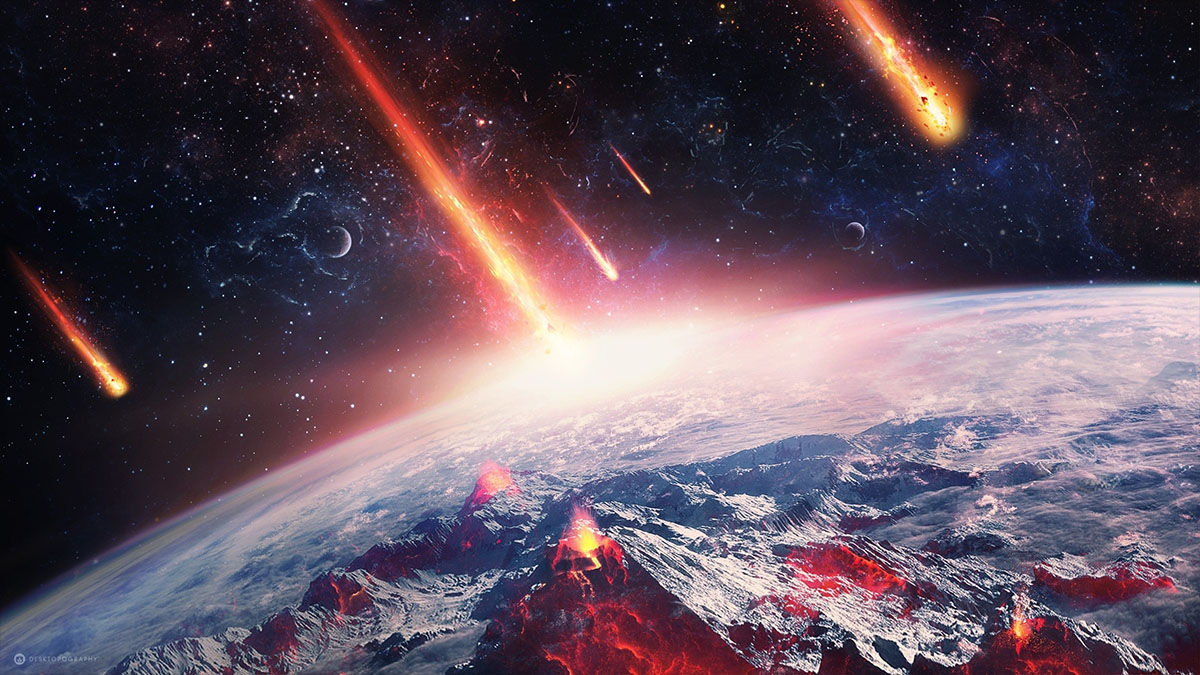how can we save earth from a doomsday asteroid? with robotic space jujitsu!

The year is 2037 and a large asteroid is headed towards Earth. Calculations show that it will hit a major city, possibly killing millions on impact if nothing is done. Dozens of powerful nuclear warheads are mounted on rockers and reprogrammed to collide with the asteroid to maximize the damage their detonations will cause. As they approach, neutron beams ignite their fission primaries, which in turn trigger their fusion secondaries, releasing enough energy to shatter the asteroid into countless shards. But before we start celebrating the first ever elimination of a threat from outer space, astronomers warn that the asteroid is putting itself back together. The nuclear bombardment was a slight nuisance at best.
All right, you might say, let’s not use nukes, let’s send high speed kinetic impactors, large, solid metal slugs shot at high speeds to pulverize space rocks, and any other spacefaring target we’d want to destroy. Unfortunately, these impactors would have a very similar effect, according to the latest simulations of how asteroids would react to an impactor, which combine models meant to predict the effects of firing high velocity projectiles into bullet resistant materials and simulate asteroids’ gravitational fields. Giving the digital version of asteroids resilience to impacts makes the results more reflective of what we’re pretty sure would happen in reality based on what we’ve discovered so far about these objects.
how can asteroids resist high energy, high velocity impacts?
The problem for any asteroid-killing mission is that space rocks can have fairly resilient cores surrounded by rock that could diffuse the energy of explosions and impacts because it’s not solid. Instead, it’s been disturbed by innumerable collisions over billions of years and churned into small, loose stones and dust, or hiding deep fractures, creating the asteroid equivalent of crumple zones. Nukes and kinetic slugs would just end up creating a cloud of debris around the relatively undamaged core at best. With the center of mass still in place, that cloud would settle back into more or less the same asteroid we thought we just blew to smithereens.
Other asteroids would be floating rubble piles that would be merely rattled by explosions, and kinetic impactors would just pass right through them, doing minimal damage, if any at all. There wouldn’t even be a need for them to reassemble. Others still can be composed primarily of hard metals, blunting the force of impacts and explosive bombardments by converting the energy to heat and radiating it into space. All three types could still easily pose a threat no matter how many nukes and slugs we throw at them, and that prompts the question of what can we do if there’s an asteroid barreling towards us. Do we just run, hide, and hope for the best?
so, how do we stop an incoming asteroid?
Thankfully, if we can’t destroy an asteroid with anything short of an apocalyptic laser that would effectively melt it, or smart kinetic impactors able to burrow right in the center of the object and detonate with enough force to convert it into a cloud of tiny, high speed shrapnel — both of which will involve their own risks and potential problems — we can do a bit of robotic space jujitsu and divert it. Strategic impacts, nuclear blasts, and even asteroids armed with lasers and or able to attach themselves to asteroids, can shift an incoming threat to an orbit where it no longer poses a danger. And this isn’t just a theoretical concept. NASA is currently working on a mission called DART to test exactly how easily we can knock asteroids off course with a kinetic impactor by the end of 2022, set to launch as soon as December of next year.
Ideally, we’d have a warning early enough to have a few years to slowly adjust these asteroids’ courses, but we could also shove them out of the way to avoid a sudden impact and park it into a safe trajectory later. So, while it may be easy to take these simulations as bad news and dire warnings, they’re really more of a time saver, showing us what existing and feasible approaches are most likely to work. We can absolutely save the world from an apocalyptic impact. We have the technology, the know-how, and the resources, and are actively doing dress rehearsals for a real threat. We just have to do it through strategy and skill instead of brute force.





